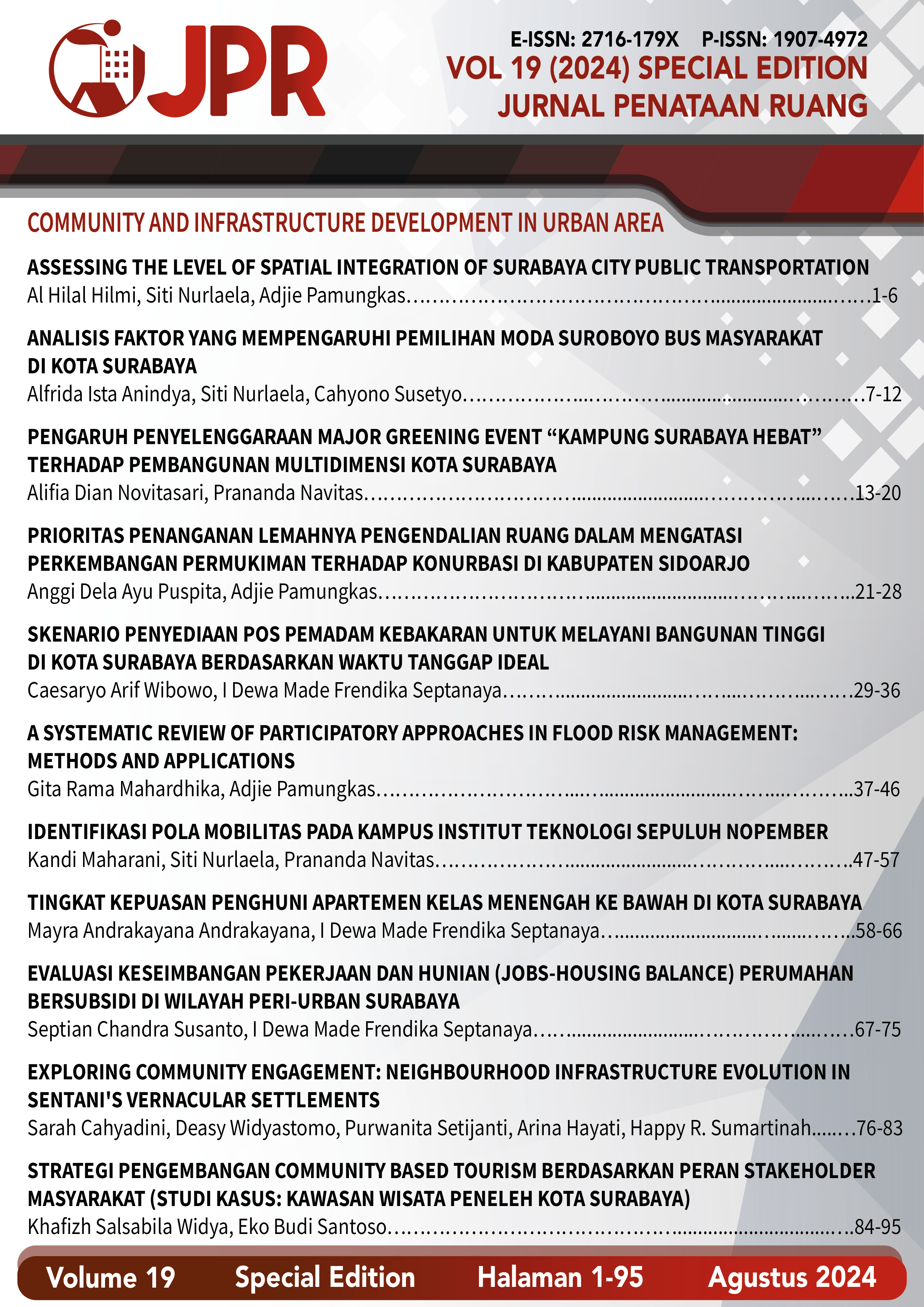Assessing the Level of Spatial Integration of Surabaya City Public Transportation
Main Article Content
Abstract
This research investigates the integration of public transportation services in Surabaya City, focusing on the Suroboyo Bus and its feeder lines. Using spatial assessment techniques and graph theory, the study evaluates Node Connectivity (NC), Line Connectivity (LC), and Transfer Center Connectivity (TCC) index across 18 zones. Results show significant disparities in connectivity levels, with zones along the North-South corridor through central Surabaya consistently demonstrating high integration. In contrast, zones along the eastern ring road and the northeastern part of Surabaya show poor integration, revealing critical areas needing improvement. Factors such as zone density and the number of transit nodes influence these outcomes, underscoring the importance of balanced service distribution. The study emphasizes the necessity for future research to address imbalances and improve the overall efficiency of Surabaya City's public transportation network.

